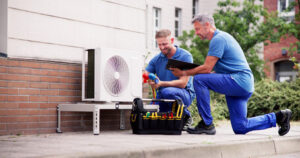Home Remodeling Warrington PA is a smart investment that adds both aesthetic and practical gains. Replacing old materials with low-maintenance options like granite countertops, hardwood floors, or energy efficient windows can reduce time and cost spent on cleaning and repairs.

Adding a home gym, theater room, or outdoor living space encourages creativity and gives homeowners the opportunity to pursue hobbies they love in a dedicated space.
After years of wear and tear, even the most beautiful homes can need a facelift. Remodeling is more than just a cosmetic makeover—it’s an opportunity to upgrade your home’s style and improve the flow of living spaces. From adding natural materials to introducing vibrant colors, you can create a space that feels like a retreat and is tailored to your lifestyle.
A well-designed indoor living space can encourage physical activity and enhance mood by reducing stress and anxiety. This is especially true for spaces that allow you to engage in creative pursuits such as sewing, woodworking, or painting. Remodeling can enable you to designate a dedicated area for these activities, or create a more open-plan layout that encourages interaction and movement throughout the house.
Remodeling can also help improve the overall health and well-being of your family by replacing or eliminating toxic materials, improving ventilation, and enhancing natural lighting. This can include everything from eliminating lead paint to swapping out old carpet for low-VOC flooring, and it can make your home safer for children and older adults.
The term “remodeling” is often used interchangeably with the term “renovation.” While renovations are essentially cosmetic in nature, remodeling involves changing the structure of a space and may involve more extensive work than just redecoration. If you’re considering a major remodel, it’s best to hire a professional who is experienced with this type of project and can minimize the disruption to your everyday life. They can also ensure that your project is completed safely and on schedule.
Increased Functionality
Home remodeling is an opportunity to transform your space to fit the needs of your family and lifestyle. For example, you might remodel your kitchen to add a built-in oven and more storage space. This allows you to cook and entertain more easily. You might also remodel your living room to include a fireplace and seating to create a cozy retreat.
A remodel can help you achieve better functionality by updating your appliances, adding a new garage door, or installing smart home systems. You can control the lighting, temperature, and security of your home with just the press of a button or by using voice activation. These upgrades can make your house more energy efficient, which can lead to lower utility bills and tax credits.
Many older homes have poor ventilation and moisture problems that can trigger a variety of health issues. These problems may cause coughing, wheezing, a runny nose, itchy eyes, or other symptoms. By replacing old windows, insulating the walls, and upgrading your roof during your remodel, you can reduce these health hazards and breathe easier.
Home remodels can also encourage creativity, a trait that promotes emotional and mental well-being. Studies have shown that creative pursuits, such as learning a new language or taking a dance class, can reduce stress and delay the onset of dementia and Alzheimer’s disease. By reworking your home to include an art studio, woodworking shop, or sewing area, you can inspire creativity and encourage a healthy lifestyle. This can be especially helpful for aging adults, who might struggle to find a creative outlet outside of the home. In addition, a new home office can provide an effective workspace to tackle projects and manage daily tasks.
Energy Efficiency
Home remodeling projects can help boost comfort and add space for family activities, but they’re also a chance to make your house more energy efficient. Replacing old windows, adding insulation or upgrading appliances to more efficient models are all ways you can lower your energy usage and save money on your utility bills. These improvements can also make your home more attractive to eco-conscious buyers when it comes time to sell.
If you’re considering an energy-efficient home remodel, Advisor Construction is here to help. We’ll walk you through the process, ensuring that your home is not only more comfortable and functional but also sustainable and environmentally friendly. We can also assist you in navigating local rebates and incentives that may be available for your project.
The rise of eco-friendly materials has led to a growing trend in home remodeling, with homeowners seeking solutions that are both stylish and environmentally friendly. From durable engineered wood flooring to quartz countertops, innovative products have opened up new possibilities for the modern home.
In addition to reducing energy consumption, home renovations can increase the functionality of your living spaces by providing more storage or creating extra space for entertaining. Whether you want to create a new space for a home gym or a playroom, our team can help you design an energy-efficient solution that fits your needs.
While incorporating energy efficiency into your home remodel is an important step, many homeowners struggle to find the necessary upfront investment for these upgrades. This is where customer financing comes in handy, allowing you to take advantage of the energy-saving benefits of home remodeling while paying for them over time. This helps more families reach their energy-saving goals and contribute to a more sustainable future.
Safety
While home remodeling projects provide many benefits, they can also present several safety hazards. For example, work areas can be cluttered with tools and other materials that could cause someone to trip or injure themselves. Regularly inspecting work sites to identify potential safety issues and addressing them promptly can minimize the risk of accidents.
Creating and following a clear plan during the remodel can help keep the project running smoothly and reduce stress for all involved. Homeowners should also be aware of any changes that may affect the resale value of their property. For instance, a pool or an outdoor entertainment area may not appeal to all prospective buyers and could deter them from making an offer.
One of the biggest mistakes homeowners make when attempting DIY home remodeling is taking on tasks that they aren’t qualified to do. This can lead to poor workmanship and increased costs. Hiring a professional contractor is the best way to ensure that your remodel is done correctly and safely. A general contractor will hire subcontractors (plumbers, electricians, drywallers, etc.) and manage the schedule to get the job done at the most convenient times for you.
It’s also important to understand the difference between remodeling and renovating. Remodeling involves changing the structure of a space, such as adding an extension or changing a room’s layout. Renovation, on the other hand, is more cosmetic and typically involves updating finishes, such as painting or replacing flooring. Both can have a positive impact on your home’s aesthetic, but it’s important to know what you’re getting into before you start. A general contractor can help you decide what type of upgrade is right for your home.
Peace of Mind
Over time, even the best-designed homes may require a bit of remodeling. Remodeling can address aging issues like outdated plumbing, electrical problems, or structural damage and help prevent costly repairs down the road. This provides peace of mind for homeowners who want to enjoy their home’s livability without the worry of future problems.
A well-planned remodel can also increase the resale value of your home. It is important to consider what upgrades are most sought after by prospective buyers in your neighborhood and how they will fit with your family’s lifestyle. Professional designers can help you determine which projects will have the highest return on investment for your home.
Your home is the foundation of your life, and it should be a place where you can rest and recharge. Living in a space that feels dated, unorganized, or dysfunctional can contribute to stress and anxiety. Remodeling your home can transform it into a space that uplifts your mood, fosters community, and supports your family’s unique needs.
During your remodel, it is important to discuss the vision for your project with your contractor and share inspirations, such as magazine layouts or Pinterest boards, so they understand what you are looking for. It is also a good idea to create a detailed project budget and timeline, so there are no surprises down the road. Also, be sure to plan for how you will manage daily activities during the remodel and find a place to stay during this time. A hotel or a friend’s house could be helpful during this stressful time. A clear understanding of the project scope and schedule will help you relax and feel confident in your decision to remodel your home.

